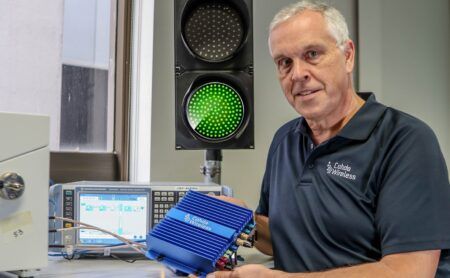A cutting-edge pedestrian-warning system is being piloted on the University of Florida Transportation Institute (UFTI) campus, in collaboration with the Florida Department of Transportation.

The research will be led by Lily Elefteriadou, director of UFTI. The team will study the effectiveness of these systems at both regular intersections and, crucially, at so-called mid-block crossings – those spots between intersections where pedestrians often cross but that lack traffic signals and other ways to control cars. The majority of pedestrian deaths happen outside of intersections, including at mid-block crossings.
“This is a unique collaboration between our university, the city and the Florida DOT that is creating a living lab, which means the testing happens on real roads,” says Elefteriadou. “In realistic settings we will get to study more naturalistic behavior. There is no replacement for that.”
In addition to UFTI’s expertise in transportation research, UF provides the ideal location to study connected vehicle infrastructure because of the diversity and complexity of transportation on a college campus.
“We have a good amount of pedestrian and bicycle traffic. We have e-scooters, cars and the bus system. You get all of this in one place and you don’t have to go study different things in different places,” said Pruthvi Manjunatha, one of the project’s leaders and manager of the I-STREET Living Lab, the advanced tech traffic research center within UFTI that is running the study.

“Even if we have the tech, it’s the way we deliver the message that makes all the difference. If we can find the optimum mode of message delivery, that’s going to be a game changer,” Manjunatha said. “Whoever the road user is, ideally these alerts should help them make better decisions.”
In focus groups and at real street crossings, Elefteriadou’s team will evaluate how pedestrians and cyclists use the smartphone app to receive warnings. The researchers will also study how drivers respond to dashboard alerts sent from roadway sensors. That information will help the scientists tweak the alerts to encourage consistent use.
Following the roughly year-long study, the researchers will prepare a final report that will help universities like UF and communities around the country implement connected vehicle infrastructure technology more effectively.
“It’s only a matter of time before more and more cities have this communication between the infrastructure and drivers. The quality of data that is coming out of this project will definitely help us design better solutions,” says Elefteriadou.





